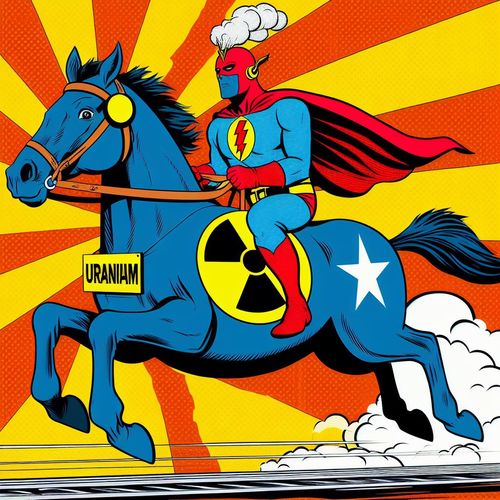The uranium market is incredibly tight right now. There is very limited supply available to purchase in the near-term. This scarcity is evident in the high spot price, which is currently around $105/lb. This high price accurately reflects the market fundamentals, not speculation.
Despite the price signals, new mine supply will not rapidly enter the market. Bringing new uranium mines online is an arduous, expensive, and time-consuming process. Smaller companies without proven teams often struggle to deliver projects. Just completing feasibility studies can take years. Then you have the long process of detailed engineering, equipment procurement, and construction.
Crucially, most proposed projects are not in the hands of large and proven mining companies. These smaller explorers and developers face immense difficulties in actually building and operating a mine. Many have never done it. They simply lack the technical expertise and seasoned staff to manage the complexities.
Additionally, costs have risen substantially in the mining industry. Supply chain issues, inflation, and competition for skilled labor have all increased capital requirements. But many studies rely on outdated assumptions that no longer reflect this new cost environment.
Much of the experienced talent that ran uranium mines in the past have died or retired. Talk to any young person today and they all want to work in tech or finance — nobody is studying to join the mining industry. The industry is experiencing major manpower shortages.
Investors and lenders now also demand much higher rates of return to finance projects, given higher interest rates and perceived risk.
If the risk-free rate is 5%, what is the rate required to incentivize investment in building a uranium mine in an impoverished African country that recently had a coup and is now run by a military junta?
All this makes bringing on new mines extremely capital intensive. The incentive price for new production is likely upwards of $120/lb, not the $75/lb many expect. The supply side will not rapidly respond to fill the deficit at current prices. There are too many barriers to adding meaningful new supply in the short to medium term.
The only projects likely to advance are those held by the handful of well-funded developers — mostly in Canada or the US. But even these projects are 3+ years from production in a best case scenario. The supply-demand imbalance will remain for some time.
A prime example is Denison Mines' Phoenix project in Canada. Denison has invested significant time and resources over the past five years derisking this deposit. They’ve conducted extensive field testing and piloting to validate the use of in-situ recovery (ISR) mining. This work culminated in a feasibility study published in 2022.
The feasibility study reflects realistic assumptions on costs and uranium prices. It cements Phoenix as one of the lowest cost uranium development projects globally. Yet even for a robust project like Phoenix, first production is still 5+ years away in late 2027 or early 2028. Denison must still complete detailed engineering, permitting, and project financing.
This lengthy timeline is common across the industry. The supply deficit will persist because mines cannot be built rapidly even at prices above $105/lb.
How a Ukraine Ceasefire Could Impact the Market
If the conflict in Ukraine ended, it could create some short-term negative sentiment around uranium equities. Investors might assume the bullish thesis is invalidated. However, the fundamentals likely remain unchanged.
Russia itself appears short on uranium supply currently. They are active buyers in the spot market despite past sales. A ceasefire does not suddenly give Russia access to abundant inventory that can flood the market. Any impact would be limited to the optics and psychology around perceived resolution of the Russian supply risk.
Of course, enrichment may be impacted if sanctions on Russia loosen. This could lower enrichment prices and increase underfeeding. But underfeeding volumes today are minor compared to the early 2000s. This trickle of extra supply would hardly dent the deficit. Additionally, western enrichers are running at capacity and unlikely to increase overfeeding.
In summary, while negative sentiment could pressure uranium equities short-term, the risk-reward of the sector remains compelling. The structural supply deficit will continue regardless of whether tensions ease with Russia in the near future.
Limited Risk from Secondary Supplies
Some have asked about uranium inventories held by institutions flooding the market. However, these “secondary” supplies are unlikely to meaningfully change the thesis.
Pre-production companies and investment funds do hold some inventory. But in the grand scheme, their stocks pale compared to global reactor requirements.
In the 2000s, large predictable secondary supplies did exist from underfeeding and downblended HEU. This provided a crucial buffer. Today those supplies are gone. The only potential inventory to monitor is that held by speculative traders or funds. And indications are these groups continue buying rather than selling material into the market currently.
The utilities are well aware that available secondary supplies will not come close to fulfilling demand. Their contracting strategy reflects this belief. They are locking up long term contracts with floors well above current spot pricing to guarantee future inventory.
In summary, secondary supplies may create short blips but won't derail the bull market. The only thing that can fix the deficit is meaningful new production coming online. And as discussed already, that will not happen rapidly at these price levels. The uranium bull thesis remains on solid ground.

